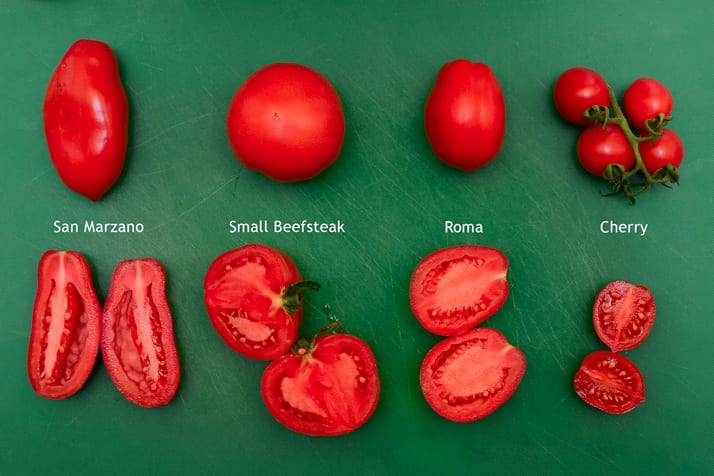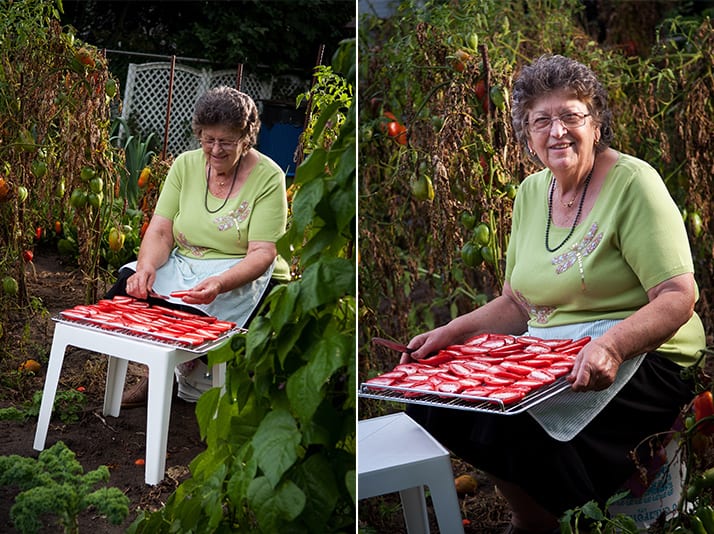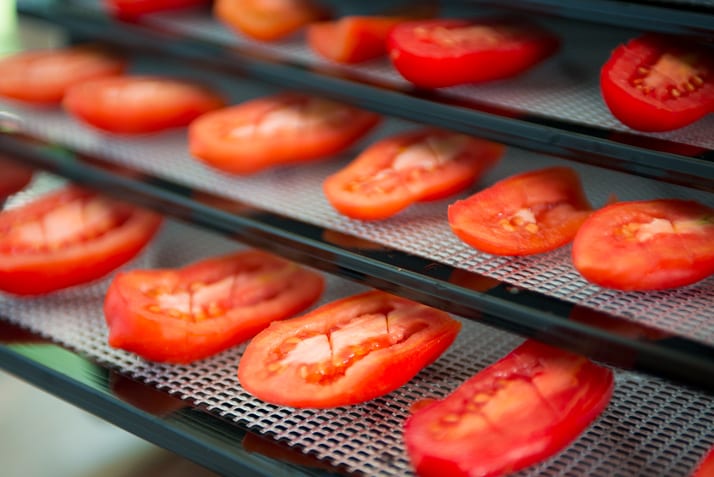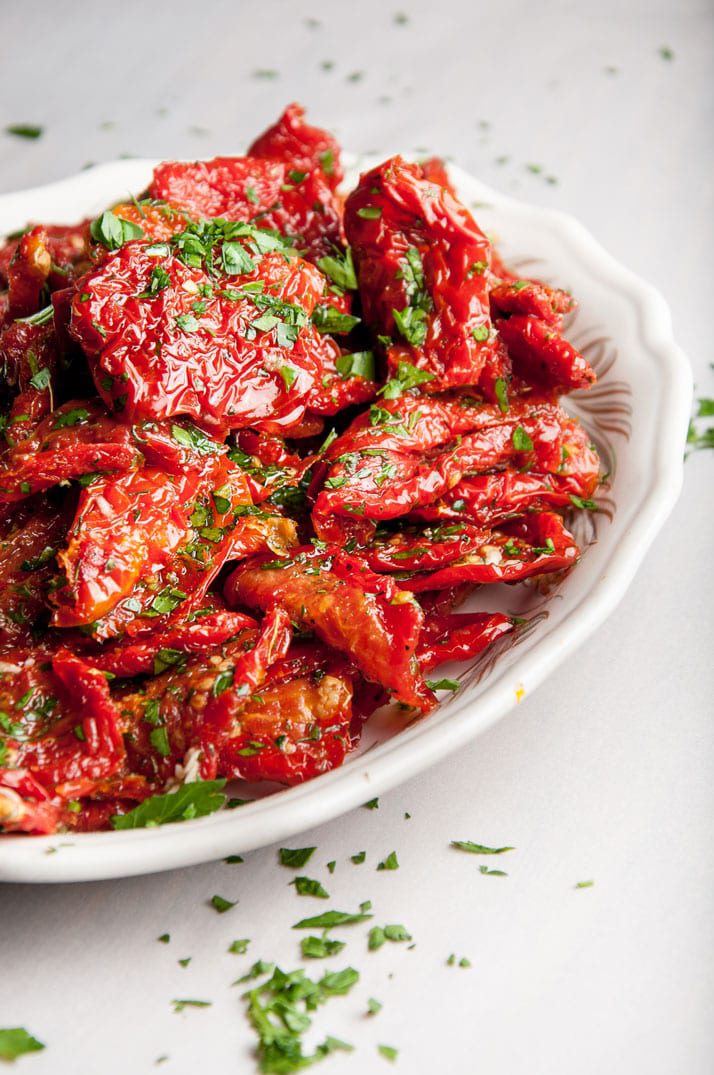
A while back we showed you how to dress sun dried tomatoes. We got such great feedback and interest that we wanted to share our drying tips so you can enjoy these tasty gems all year round. You will find that the process is very similar to that in the drying hot peppers post.
When it comes to drying fruits and vegetables you always want to start with fresh, ripe, and clean produce. With tomatoes however, there are so many varieties available so choosing the right one is the first step. You can see below the difference between just a few types of tomatoes.
I guess you can dehydrate almost anything but for us the ideal tomato for drying is the San Marzano. You can see how the interior has very little pulp and seeds compared to the other tomatoes as well as being the perfect size for drying. Whereas, beefsteak tomatoes have lots of water, seeds, and pulp and may not dry effectively. The other factor of course is taste and some tomatoes are just better than others- period! This is not to say you can’t try so if you have success with other types of tomatoes please let us know. We are going by what our contributing Nonnas and their mothers before them have done and trust us, you will love them and be surprised at how easy it is to do at home with or without a dehydrator.
We are told that dehydrating in the old days was a very common method of preservation, especially in the hotter zones of Italy. Even I remember what seemed like a sea of tomatoes laying out in the sun and peppers hanging on balconies as well as grapes, beans, herbs, and figs all being preserved by drying.
Today we have the luxury of ovens and electric dehydrators that are fail safe and easy to use. Did we mention safe and easy?
Local produce here in Ontario is still in full force so hit up your local grocer or better yet, pick your own at one of many farms in the area and give it a try. We have used both methods, oven and dehydrator, with great success. Nonna Olga actually lays hers out in the sun on a hot day to give them a start and then finishes them in the oven. Although dehydrated, we do still suggest freezing them in food safe freezer bags as it doesn’t take much to ruin the fruits of your labour. This also allows you to leave a touch of moisture in them without worrying about them rotting.
Once you have some ripe San Marzano tomatoes washed and ready to go cut off the stem top, cut each tomato in half length wise and remove any green or hard core near the top of the tomato. Lastly, score the tomato centers on a diagonal to help prevent curling and assist in the escape of moisture. If using the oven, place them cut side up first on the racks with the oven at 130 degrees F. It does take a while, 16-24 hours so be patient! Turn them over and flatten them out if they have curled. For non-convection ovens you may need to leave the door open slightly. Remove the tomatoes once they are dry. They shouldn’t be so dry that they are crumbly or crack if pinched. You want the seeds and center dried but a bit of texture left in them, kind of like dried figs, a chewy consistency. If using a dehydrator, follow the manufacturer’s recommendation and just wait! Check on them periodically as you would with the oven method and flip over about half way through the process. Again, look for curled edges and flatten them out with your fingers for even drying and nice flat dried tomatoes.
Now that they are dry just place them in food safe freezer bags and remove desired quantity when ready for use.








Sorry, the comment form is closed at this time.